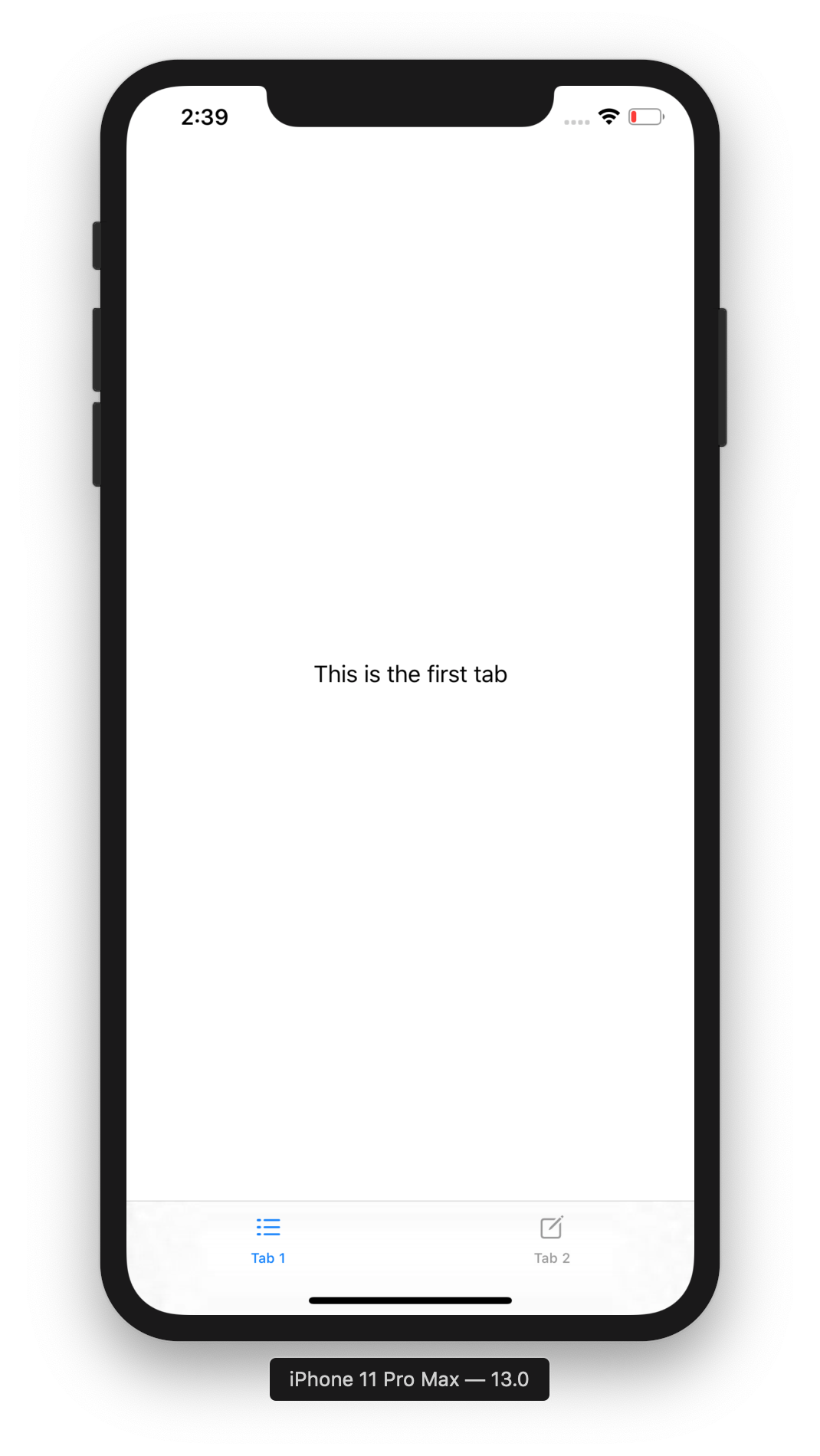
import SwiftUI
struct TabBarView: View {
var body: some View {
TabView {
Tab1View()
.tabItem {
Image(systemName: "list.dash")
Text("Tab 1")
}
Tab2View()
.tabItem {
Image(systemName: "square.and.pencil")
Text("Tab 2")
}
}
}
}
Change the method in the SceneDelegate.swift file to this:
func scene(_ scene: UIScene, willConnectTo session: UISceneSession, options connectionOptions: UIScene.ConnectionOptions) {
// Use this method to optionally configure and attach the UIWindow `window` to the provided UIWindowScene `scene`.
// If using a storyboard, the `window` property will automatically be initialized and attached to the scene.
// This delegate does not imply the connecting scene or session are new (see `application:configurationForConnectingSceneSession` instead).
// Create the SwiftUI view that provides the window contents.
let contentView = TabBarView()
// Use a UIHostingController as window root view controller.
if let windowScene = scene as? UIWindowScene {
let window = UIWindow(windowScene: windowScene)
window.rootViewController = UIHostingController(rootView: contentView)
self.window = window
window.makeKeyAndVisible()
}
}
import SwiftUI
struct Tab1View: View {
var body: some View {
Text("This is the first tab")
}
}
import SwiftUI
struct Tab2View: View {
var body: some View {
Text("This is the second tab")
}
}